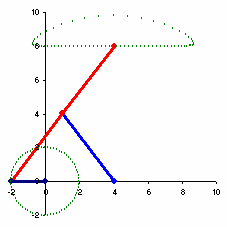Perpetual motion
Interesting articles from Wikipedia and other web sites...
From Wikipedia.org
Perpetual motion describes "motion that continues indefinitely without any external source of energy; impossible in practice because of friction." It can also be described as "the motion of a hypothetical machine which, once activated, would run forever unless subject to an external force or to wear". There is a scientific consensus that perpetual motion in an isolated system would violate the first and/or second law of thermodynamics.
Despite the fact that successful isolated system perpetual motion devices are physically impossible in terms of the current understanding of the laws of physics, the pursuit of perpetual motion remains popular.
There is a scientific consensus that perpetual motion in an isolated system violates either the first law of thermodynamics, the second law of thermodynamics, or both. The first law of thermodynamics is essentially a statement of conservation of energy. The second law can be phrased in several different ways, the most intuitive of which is that heat flows spontaneously from hotter to colder places; the most well known statement is that entropy tends to increase, or at the least stay the same; another statement is that no heat engine (an engine which produces work while moving heat from a high temperature to a low temperature) can be more efficient than a Carnot heat engine.
In other words:
- In any isolated system, one cannot create new energy (first law of thermodynamics)
- The output power of heat engines is always smaller than the input heating power. The rest of the energy is removed as heat at ambient temperature. The efficiency (this is the produced power divided by the input heating power) has a maximum, given by the Carnot efficiency. It is always lower than one
- The efficiency of real heat engines is even lower than the Carnot efficiency due to irreversible processes.
From Youtube: Some interesting experiments about perpetual motion.
Please, be advised:
These Videos are of motorized versions that were built to illustrate how these machines were supposed to work in the minds of Inventors.
Other interesting resources:




Comments